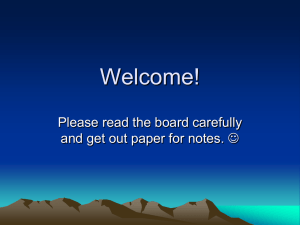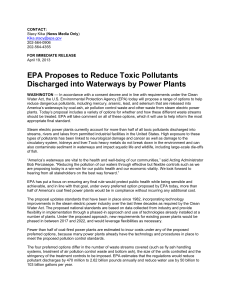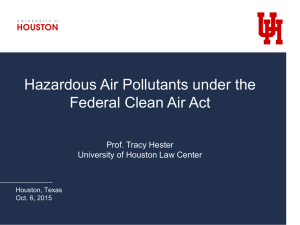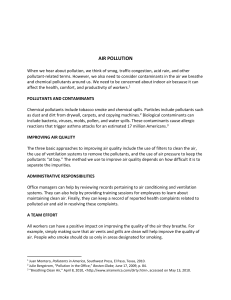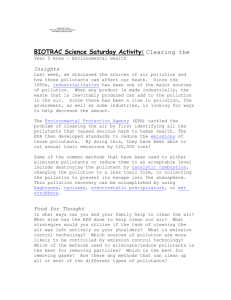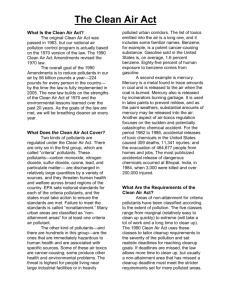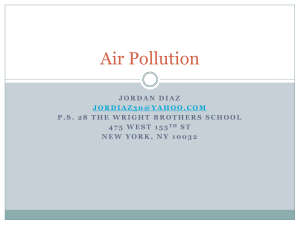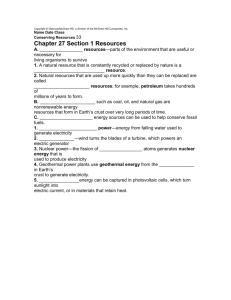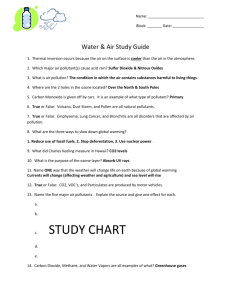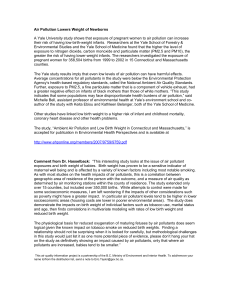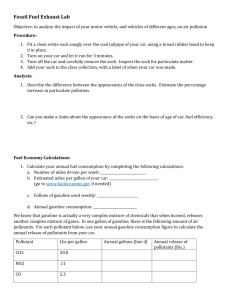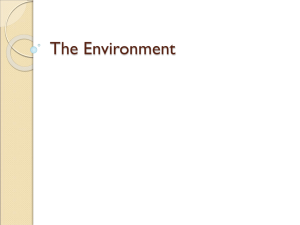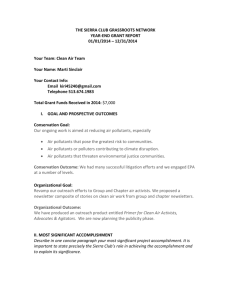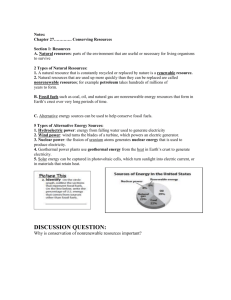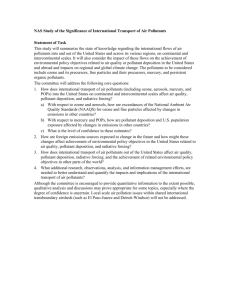Air pollution assignment
advertisement
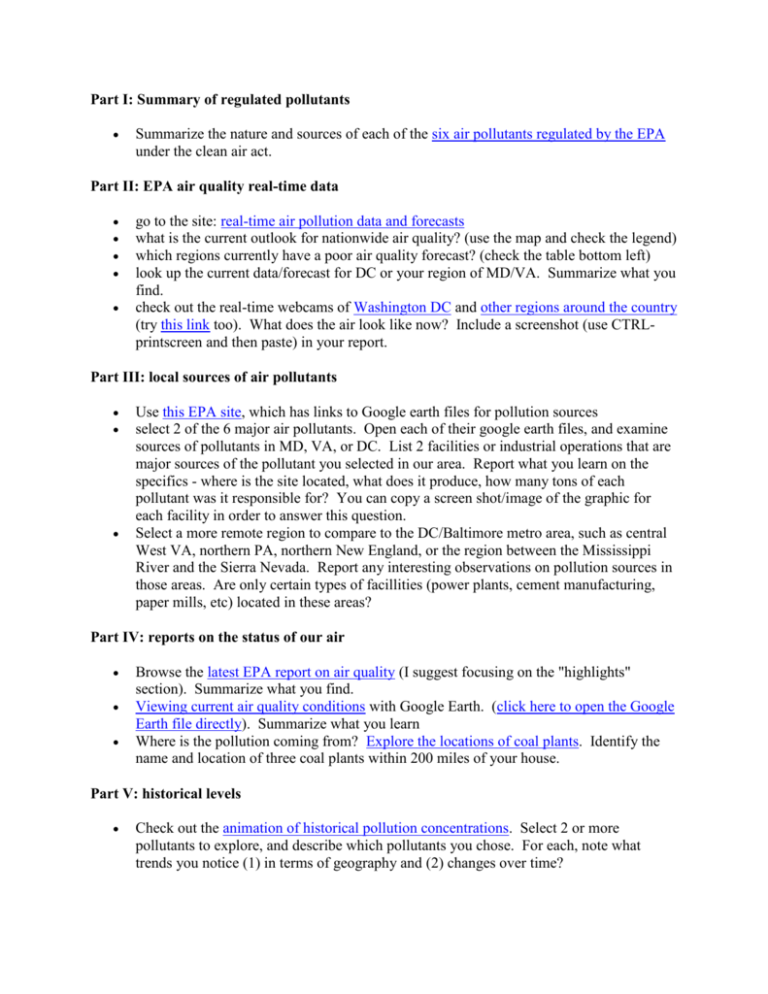
Part I: Summary of regulated pollutants Summarize the nature and sources of each of the six air pollutants regulated by the EPA under the clean air act. Part II: EPA air quality real-time data go to the site: real-time air pollution data and forecasts what is the current outlook for nationwide air quality? (use the map and check the legend) which regions currently have a poor air quality forecast? (check the table bottom left) look up the current data/forecast for DC or your region of MD/VA. Summarize what you find. check out the real-time webcams of Washington DC and other regions around the country (try this link too). What does the air look like now? Include a screenshot (use CTRLprintscreen and then paste) in your report. Part III: local sources of air pollutants Use this EPA site, which has links to Google earth files for pollution sources select 2 of the 6 major air pollutants. Open each of their google earth files, and examine sources of pollutants in MD, VA, or DC. List 2 facilities or industrial operations that are major sources of the pollutant you selected in our area. Report what you learn on the specifics - where is the site located, what does it produce, how many tons of each pollutant was it responsible for? You can copy a screen shot/image of the graphic for each facility in order to answer this question. Select a more remote region to compare to the DC/Baltimore metro area, such as central West VA, northern PA, northern New England, or the region between the Mississippi River and the Sierra Nevada. Report any interesting observations on pollution sources in those areas. Are only certain types of facillities (power plants, cement manufacturing, paper mills, etc) located in these areas? Part IV: reports on the status of our air Browse the latest EPA report on air quality (I suggest focusing on the "highlights" section). Summarize what you find. Viewing current air quality conditions with Google Earth. (click here to open the Google Earth file directly). Summarize what you learn Where is the pollution coming from? Explore the locations of coal plants. Identify the name and location of three coal plants within 200 miles of your house. Part V: historical levels Check out the animation of historical pollution concentrations. Select 2 or more pollutants to explore, and describe which pollutants you chose. For each, note what trends you notice (1) in terms of geography and (2) changes over time? If you have trouble with any of the links, go to the EPA data finder, a central database for EPA monitoring data
